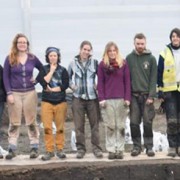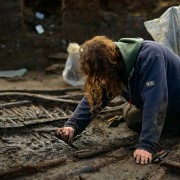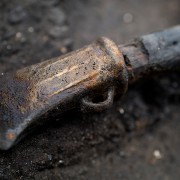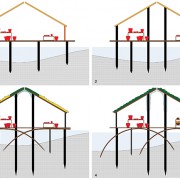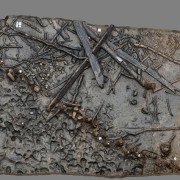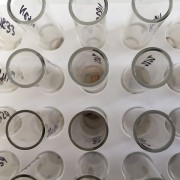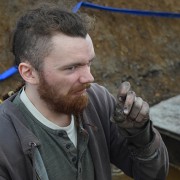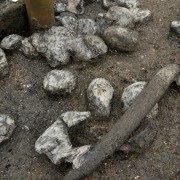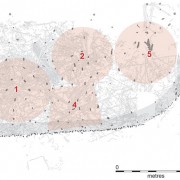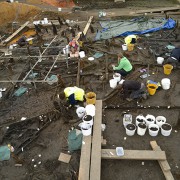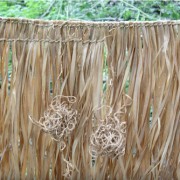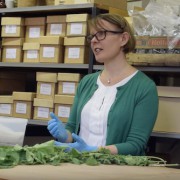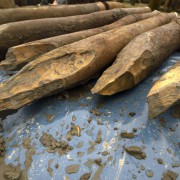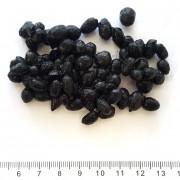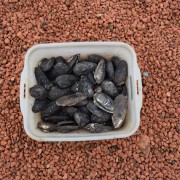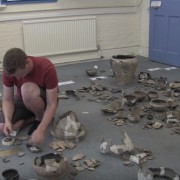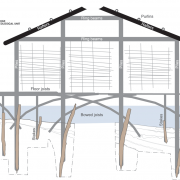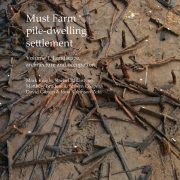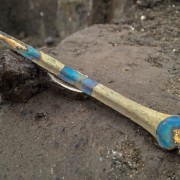Post-Ex Diary 13: The Must Farm Pile-Dwelling Settlement Open Access Antiquity Article
June 12, 2019
Background
It has been almost three years since our excavations at the Must Farm settlement came to an end. In just under 12 months of digging, with a team of a dozen or so archaeologists, we carried out detailed recording of the site and its different deposits, removed thousands of artefacts and collected hundreds of environmental samples. The Bronze Age material we encountered is some of the most exciting and best-preserved archaeology found in the UK and we are thrilled to share our first article on the project’s findings.
During the excavation we were keen to share our experiences of working on the site and to document the progress and process of the project through regular social media posts and more detailed Dig Diaries. These were intended to provide regular updates on the latest finds, excavation strategies and, most importantly, our working theories and the rationale behind them. Archaeology is a process and, as more evidence emerges, theories become more refined, subtly alter or change entirely.
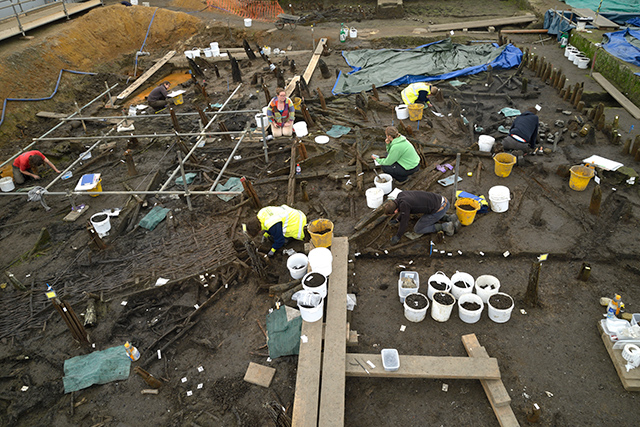
Excavation at the site was complex and required careful strategies and techniques to ensure the archaeology was recorded in detail.
Since our work on-site finished, we have been keen to continue sharing the project’s post-excavation progress. This stage of analysis takes place at a different pace where large amounts of contextual information is drawn together alongside specialist interpretation and scientific research. Post-excavation is extremely valuable and is essential in building a comprehensive and detailed understanding of all aspects of the site including its construction, material, occupation and destruction.
We’ve described the complexity of the post-excavation process and the wide range of different specialist analysis being undertaken in our Post-Ex Diary entries. This work has led to some of the interpretations that we’ve shared in the past changing and because of this we were keen to provide an up-to-date article that provides a summary of our current understanding of the pile-dwellings.
The Article
‘The Must Farm pile-dwelling settlement’, Mark Knight, Rachel Ballantyne, Iona Robinson Zeki & David Gibson. Antiquity Volume 93, Number 369: 518–535
Read the article here
(https://doi.org/10.15184/aqy.2019.38)
While we have shared information on aspects of the project online via our website and social media, we were keen to make available a more formal overview of the Must Farm settlement. Antiquity is a peer-reviewed journal of archaeology with a history of publishing articles on Fenland prehistory, notably the nearby sites at Flag Fen and Fengate. Similarly, the journal enabled us to publish our article Open Access which we felt was essential for sharing this summary of the project and our latest interpretations.
When writing the article, we wanted to create a piece that would provide a detailed outline of Must Farm’s archaeology formed from all the available evidence. We were keen to include discussions of material, architecture and environmental information and draw it together into a unified and succinct article. At the same time, we wanted to demonstrate what we thought was important about the Must Farm investigations, the significance of its discovery. Collating the information in this way also provides a clearer, more official record of the site rather than the archive of rawer blog entries on our website.
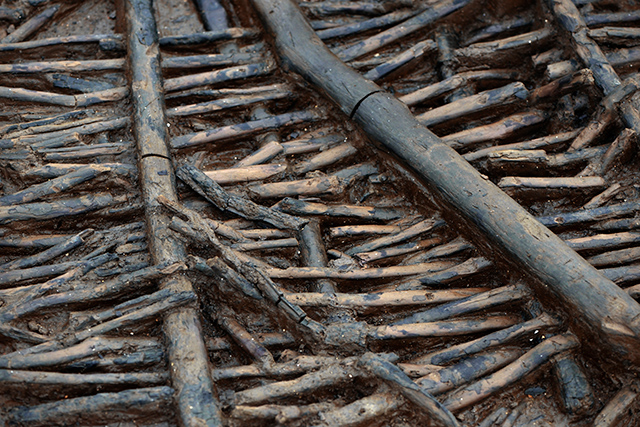
Material from the site was exceptionally well-preserved including textiles, metalwork, beads and wattle panels such as this one.
Simply titled ‘The Must Farm pile-dwelling settlement’ the article describes the discovery of the site, its background, initial evaluations and our most recent excavation. It details the activity in the river channel prior to the construction of the settlement, notably the presence of an earlier timber causeway and artefacts associated with it. We were also keen to summarise the architecture of the settlement itself alongside highlighting the material culture and biological remains present at the site.
One of the key details to have emerged during the post-excavation analysis is our understanding that the settlement was only occupied for a year before it burnt down. Multiple strands of evidence support such a short lifespan including the depth of stratigraphy, the character of the biological remains and the freshness of the timbers that were charred in the fire. The quality of the material and architecture’s preservation and the brevity of the settlement are providing us with an opportunity to understand day-to-day life of a settlement during the Late Bronze Age.
The Future of the Project and Publication
We are now drawing closer to the end of the project but there is still a lot of post-excavation work to bring together before publication. In this phase of analysis we are concentrating on several different areas, particularly enhancing our understanding of the different material types and focusing on the distribution of artefacts within and around the settlement’s structures. As described in our three Post-Ex Diaries on specialist work there is a lot of analysis to carry out involving a wide range of techniques.
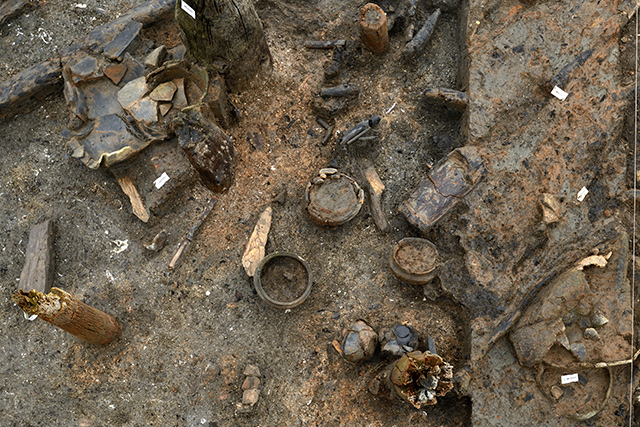
During the current phase of post-excavation we are exploring the spatial arrangement of different artefact groups across the settlement. As in this photograph, the deposits beneath the pile-dwellings often contained mixtures of different objects.
As we start to get specialist reports back and feed this information into our wider understanding of the settlement, its environment and material we can begin to explore the pile-dwelling in even greater detail. It is during this stage of the post-excavation process that the final publication comes together. Here we can start to answer questions concerning the site by bringing together all our information for the first time.
Following our original research aims we are now addressing themes such as diet and culinary practice, appearance, dwelling behaviour and the relationship between people and their environment. How did the pile-dwellings relate to one another and the wider landscape? What may have caused the fire that brought about the end of the settlement?
Collating this vast amount of specialist data and combining it with our current interpretations is complex but incredibly rewarding. We are making excellent progress so far and the final publication is due next year and we hope to have more information to share in the coming months. In the lead up to the site report being released we will continue to share updates on our post-excavation work, particularly the new discoveries and stories which emerge from this fine-grained analysis.
Related stories
Post Ex-Diary 22: Working Towards Publication
May 11, 2020
Post Ex-Diary 21: The Importance of Visualisation – Photography Part Two
February 17, 2020
Post-Ex Diary 19: The Importance of Visualisation – Illustration
December 9, 2019
Post-Ex Diary 18: The Importance of Visualisation – Photogrammetry
November 11, 2019
Post-Ex Diary 17: Stable Isotope Analyses and Must Farm
October 7, 2019
Post Ex-Diary 16: Parasites and Lifestyles at Must Farm
September 3, 2019
Post Ex-Diary 15: Exploring Structure 4 Part Two
August 5, 2019
Post Ex-Diary 14: Exploring Structure 4 Part One
July 15, 2019
Post-Ex Diary 13: The Must Farm Pile-Dwelling Settlement Open Access Antiquity Article
June 12, 2019
Post-Ex Diary 11: The Must Farm Textiles Part One
April 1, 2019
Post-Ex Diary 10: Specialist Analyses Part Three
March 4, 2019
Post-Ex Diary 9: Specialist Analyses Part Two
February 4, 2019
Post-Ex Diary 8: Specialist Analyses Part One
January 7, 2019
Post-Ex Diary 7: The Must Farm Pottery Refit
November 5, 2018
Learn more
About
The Must Farm pile-dwelling settlement was excavated by the Cambridge Archaeological Unit with funding from Historic England and Forterra.Publications
Read the Open Access publications the Must Farm pile-dwelling settlement: Volume 1. Landscape, architecture and occupation and Volume 2. Specialist reports.Dig Diaries
The excavation of the Must Farm settlement was carried out between August 2015 and August 2016. Take a look at our diary entries documenting the excavation process. ...read more
Discoveries
See some of the discoveries from the Must Farm pile-dwelling settlement.
Making Must Farm
Find out about our work with AncientCraft recreating Must Farm’s material.
FAQs
Further information on the Must Farm project.

